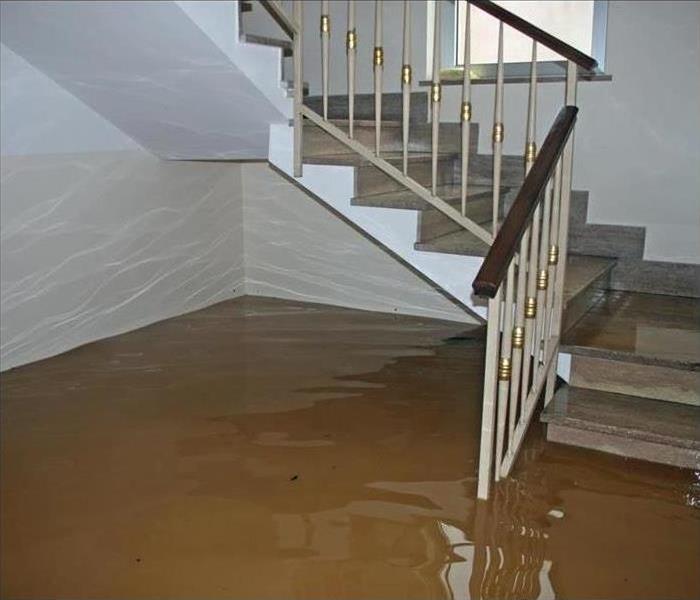6 Tips for Preventing Mold Growth After a Flood
8/4/2023 (Permalink)
Floods can cause a significant amount of property damage; however, the initial damage from the water isn't the only problem homeowners face. The moist conditions created by flooding in a home often lead to mold growth. These tips can help you avoid this problem.
6 Ways To Avoid Mold Due To Standing Water
Mold needs several basic things to flourish. Mold requires moisture, food, warmth, and oxygen to grow. It is difficult to eliminate food sources or manipulate the temperature in a home to affect mold. The primary way to prevent mold problems is to reduce moisture.
- Dry Your Property Out Quickly
As soon as it is safe, you should begin drying out your property. Mold can begin growing in 24 to 48 hours from the initial water exposure. This makes it important to remove any standing water and dry out wet materials and contents as soon as you can. You may be able to remove small amounts of water with a wet/dry vacuum. You will probably need professional equipment to remove larger amounts of water. In some cases, it may be wise to contact a water remediation company in West Valley City, UT, to speed up the process of drying out the home.
- Increase Ventilation
If the weather permits it, open windows and doors during the day to increase airflow. Use fans to circulate the air and increase water evaporation. Position the fans to blow air out of doors and windows. Reduce indoor humidity by using dehumidifiers. A dehumidifier designed for home use may work for smaller spaces, but for larger spaces, you may need to rent an industrial model.
- Remove Wet Items
Remove wet debris and contents. Carpets, carpet pads, drywall, ceiling tiles, and other porous materials may need to be discarded because these items are difficult to clean. Salvageable contents may be left outside in the sun to dry or taken off-site by a restoration company for cleaning. Clean surfaces that were exposed to floodwater with a disinfectant or sanitizer to kill mold spores and bacteria. If you can't immediately remove wet carpet, extract the water from it with a commercial carpet extractor or wet/dry vacuum.
- Shut Off Water Sources
If anything in your home is leaking water, shut off the water to your home. As long as there is a source of moisture, mold growth is likely to be a problem. Do not turn the water back on until broken pipes or leaking appliances are repaired.
- Turn Off HVAC Systems
Try to keep your home at a moderate temperature, but avoid over-cooling or overheating. A home that is too hot or too cold can cause the drying process to take longer.
- Watch for Warning Signs
If you are noticing stains on ceilings or walls or noticing musty smells, then you may have a mold issue. Take steps to remove the mold before the problem can get worse.
No homeowner wants to go through the process of restoring a flood-damaged home only to have to deal with a mold growth problem. Fortunately, there are steps you can take to reduce your chances of having to deal with this problem.






 24/7 Emergency Service
24/7 Emergency Service
